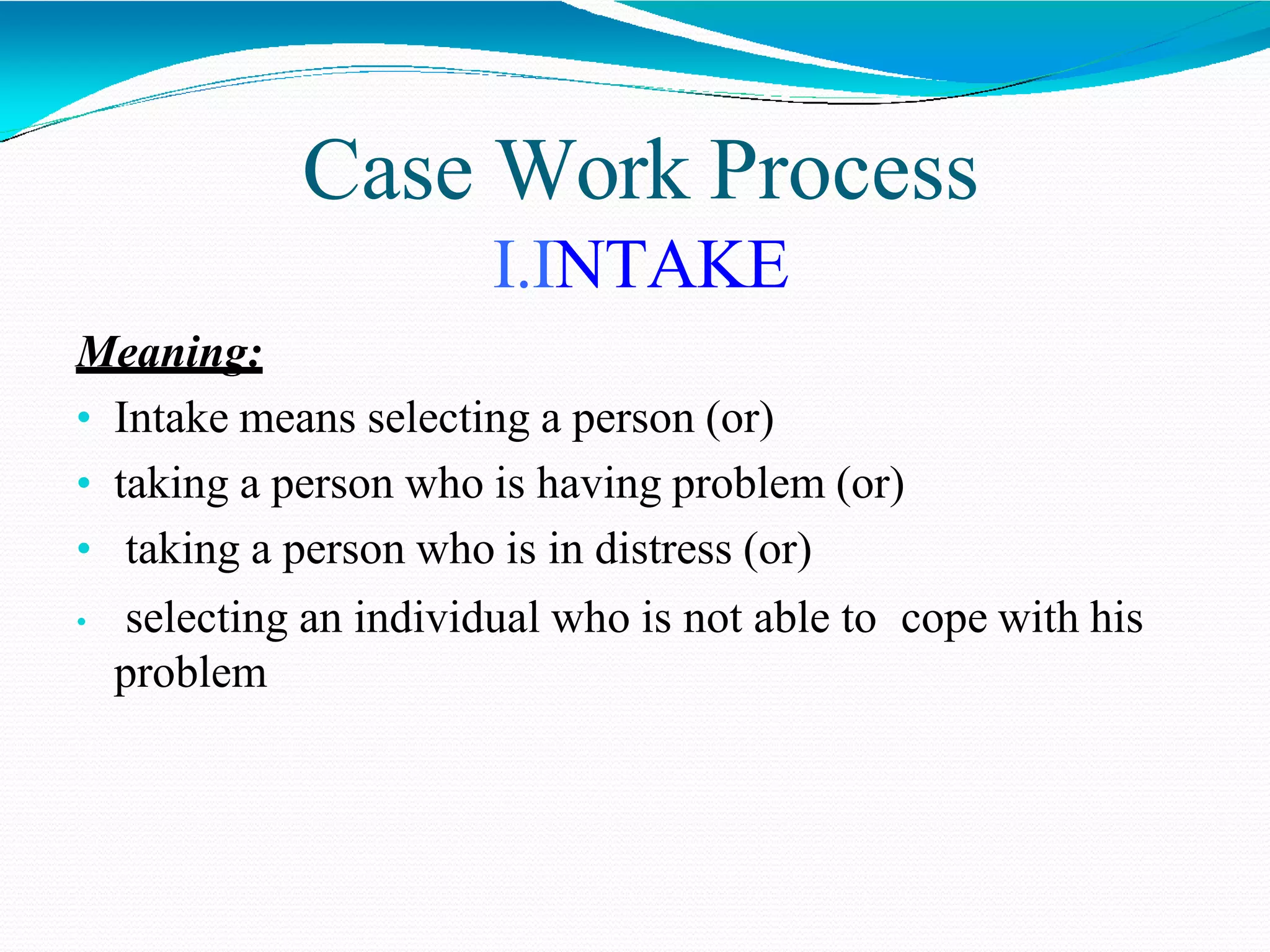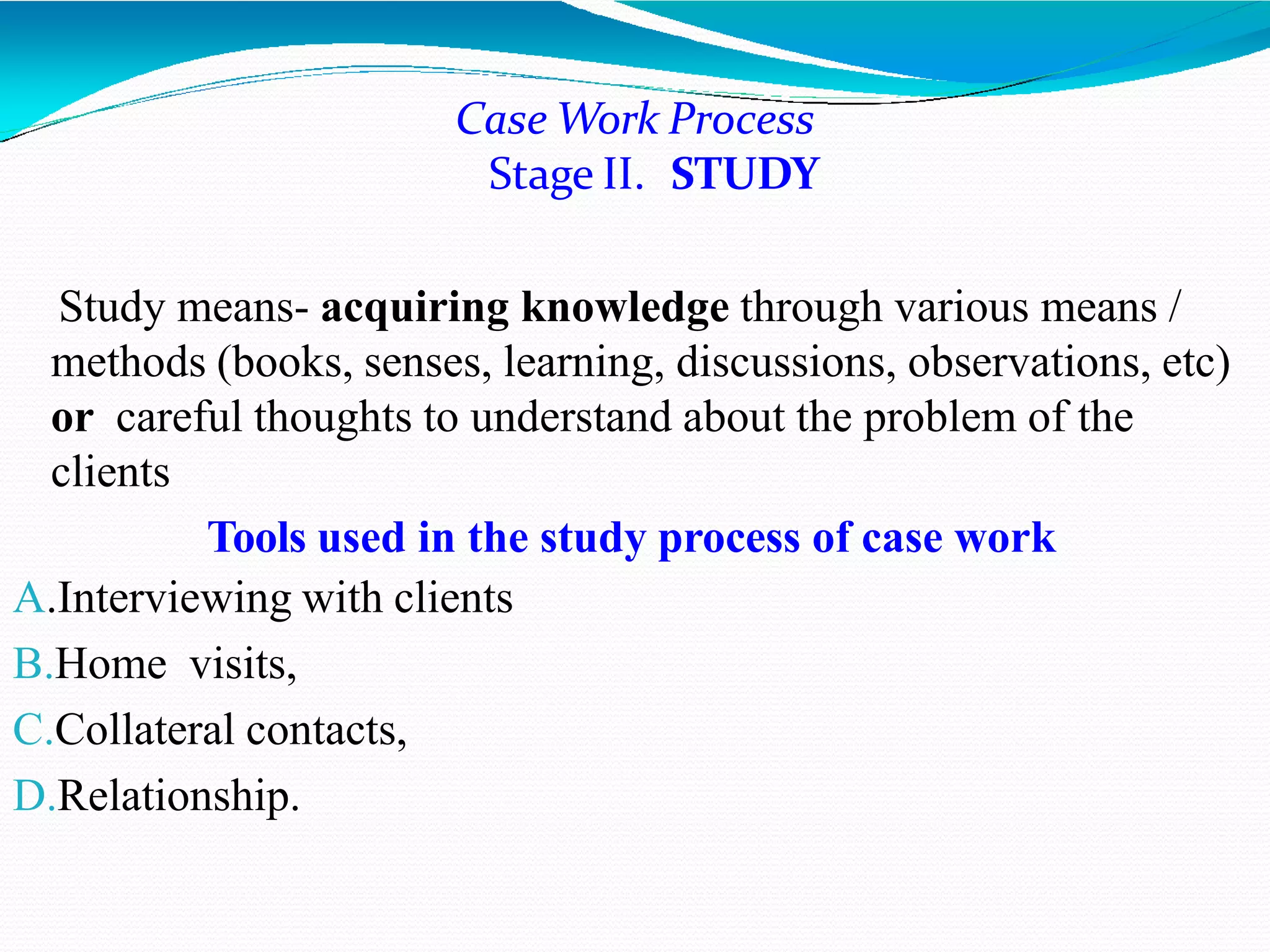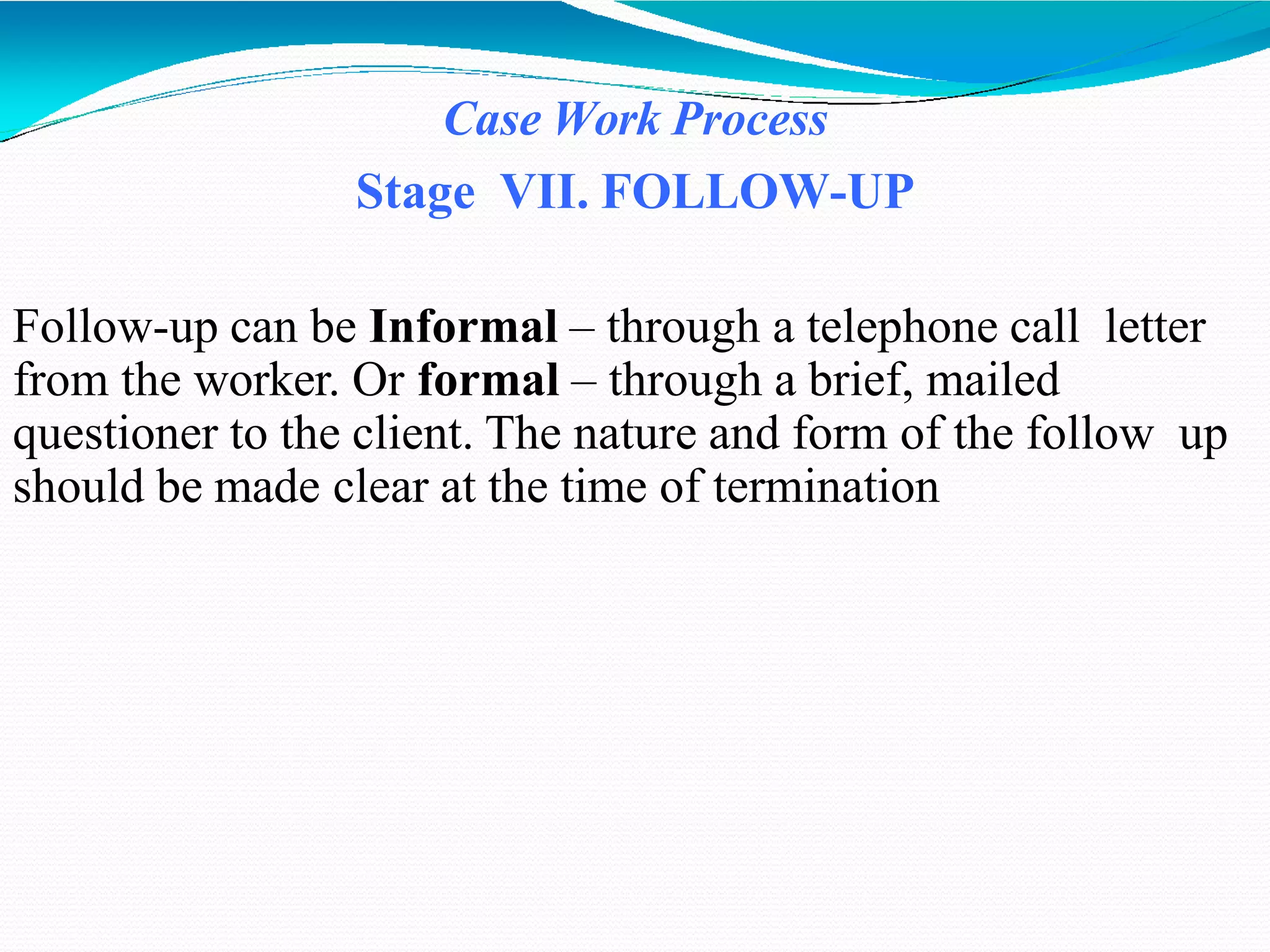I. The case work process involves 7 main stages: intake, study, diagnosis/assessment, treatment/intervention, evaluation, termination, and follow up.
II. During intake, basic identifying information about the client is collected including personal data, family background, and early family history. Referrals can come from agencies, institutions, family or self-referral.
III. The study stage involves acquiring knowledge about the client's problem through tools like interviewing, home visits, and collateral contacts to understand the nature and circumstances of the problem.




![A. REFERRAL
⚫ Referral means the process by which: a client is made
aware of another resource or service, and helped to make
contact with that resource to receive a needed service.
Types of Referral
1,The case or problem should be referred by somebody
[agency, institutions, family etc] (or)
2. Identified by the worker himself (or)
3. By the client himself to the worker or to an agency.](https://image.slidesharecdn.com/caseworkprocessibsw-220503123900/75/CASE-WORK-PROCESS-I-BSW-pdf-5-2048.jpg)
















![TYPES / APPROACHES / TECHNIQUES OF
TREATMENT
⚫Supportive Techniques (Indirect Influence) Or Indirect
Treatment Or Environmental manipulation.
⚫Reflective Techniques [Enhancing Resources orAdministration
of practical help or material help]
⚫Counselling Techniques (Direct Influence or Direct treatment.](https://image.slidesharecdn.com/caseworkprocessibsw-220503123900/75/CASE-WORK-PROCESS-I-BSW-pdf-22-2048.jpg)










